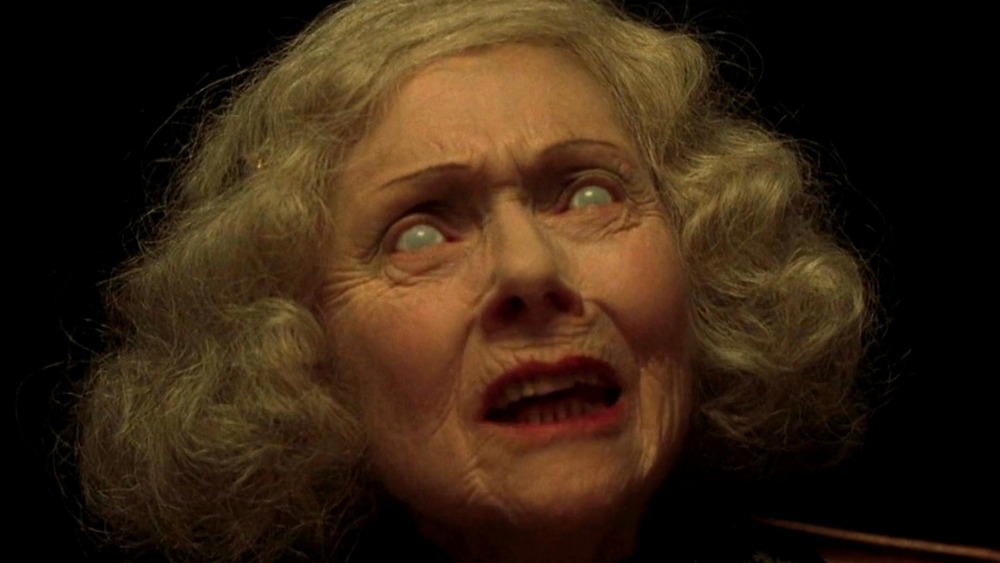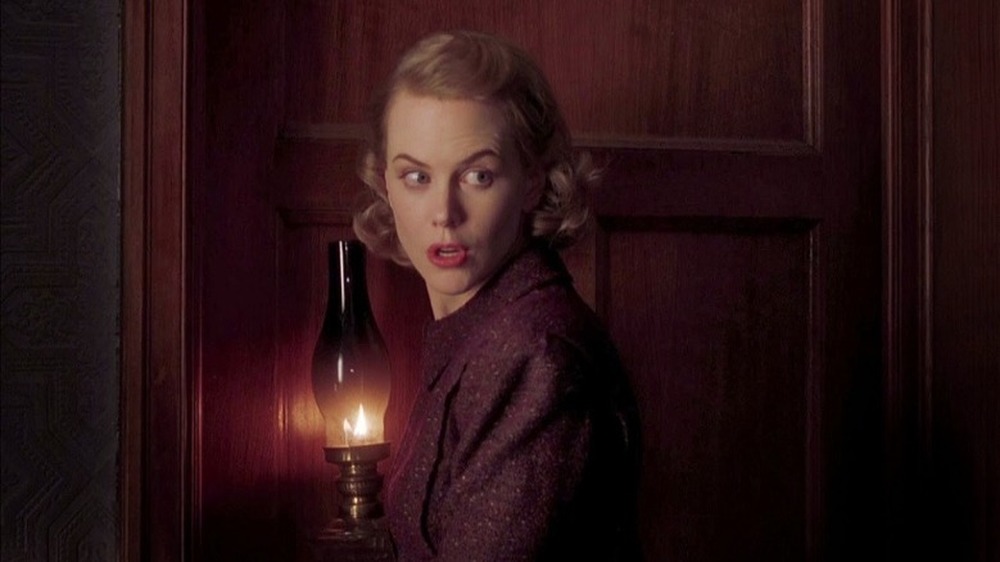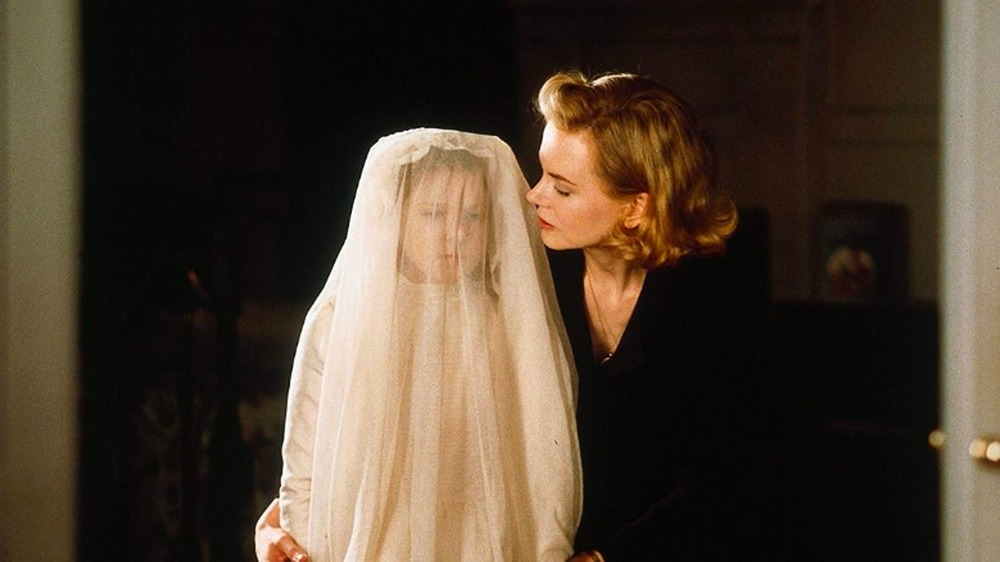The Ending Of The Others Explained
The Others, which turns 20 this year, has endured as one of the most respected and beloved haunted-house horror films of the 21st century thanks to a firm command of everything that makes the genre great. From the eerie performances to the relentlessly dread-filled atmosphere, writer/director Alejandro Amenábar didn't miss a beat when it came to the staples of the creepiest ghost stories, and there's no better example of his diligence than the film's famous, still-shocking double plot twist ending.
Focusing on Grace Stewart (Nicole Kidman), a deeply Christian woman who lives with her two photosensitive children in a dark Jersey manor in 1945, The Others follows the usual genre beats for a good deal of its runtime: Grace hires new servants who seem to know more than they're letting on, the kids begin to witness strange phenomena around the house, the history of past residents is brought up, Grace is plagued by visions and apparitions, and a mystery involving a book of mourning portraits (aka death photography) and a nearby graveyard begins to take shape.
It's not until the final 30 minutes that Amenábar shows his hand. First, there's a more "conventional" reveal in which the three new servants turn out to have been dead for over 50 years. Then, just when you think you're a step ahead of the movie, it hits you with the iconic séance sequence, in which the whole truth about Grace, the children, and the manor comes out — and proves more shocking than any viewer could have imagined.
The twist of The Others plays on the way we watch horror movies
As Grace rushes to rescue her kids from the apparitions who seem to have taken over the house, it's impossible not to hold your breath and wonder what's going to happen. Up until this point, the movie is engineered to make the viewer identify with Grace: The "others" referred to in the title appear to be the Marlish family and the mysterious old woman who insist on showing up at inopportune times, as ghosts do. Since it's a horror movie told from Grace's point of view, she is naturally positioned as the victim, the recipient of the external threat... or so we think.
The final twist in The Others is so stunning because it takes that basic scenario and turns it on its head. Instead of being haunted, Grace and the kids are revealed to be unwittingly doing the haunting. The Marlishes are the living ones, and the creepy old woman turns out to be a well-meaning seer brought in to protect them from the manor's past residents. The séance scene ends from the Marlishes' point of view, as they hastily make plans to move out and escape the "mad woman" who killed her own children and then herself.
When the movie itself ends, it's on a note of ambiguity. The house will be sold again, but there's no telling how Grace and the children will cope with it now that they know they're ghosts. All we know is that they're determined to stay: "No one can make us leave," Grace says, sealing her family's fate as the very "others" of a thousand haunted house stories.
There is meaning behind Grace's shocking actions in The Others
Easier to miss than the ingenuity of Amenábar's big rug pull are the deep, dark themes he's conveying through it. The Others is a movie about denial, which is why we're able to spend so long inside of Grace's perspective without catching on to the fact that she murdered her children. But as the ending reveals, that's not the only thing she's in denial about. When she explains her theory that God has decided to give her a "second chance," it becomes clear she's also staving off a crisis of faith.
In a 2001 interview, Amenábar said that he considers the film to be about "how religion gives meaning to death and the concept of destiny." As a World War II widow, Grace is faced with the absence of an apparent destiny for her family and the insurmountable pain of loss, which drives her to murder-suicide. Starting at that point, the whole movie is the story of her attempt to construct a world in which her faith still makes sense and has power. Hence her obsessive concern for the children's well-being, her attachment to her daughter's communion rites, and her hostile rebuttal of the kids' claims about seeing ghosts.
What the ending of The Others drives home is that, though Grace may have accepted the reality of her deeds, she's still a long way from grappling with the religious implications of her new spiritual life. Ultimately, she clings to the children and the house as if she were still alive, refusing to accept life as a damned soul in someone else's story. It's a heavy, complicated view of religion, which we can only hope Hollywood will take to heart in its upcoming reboot of the film.


